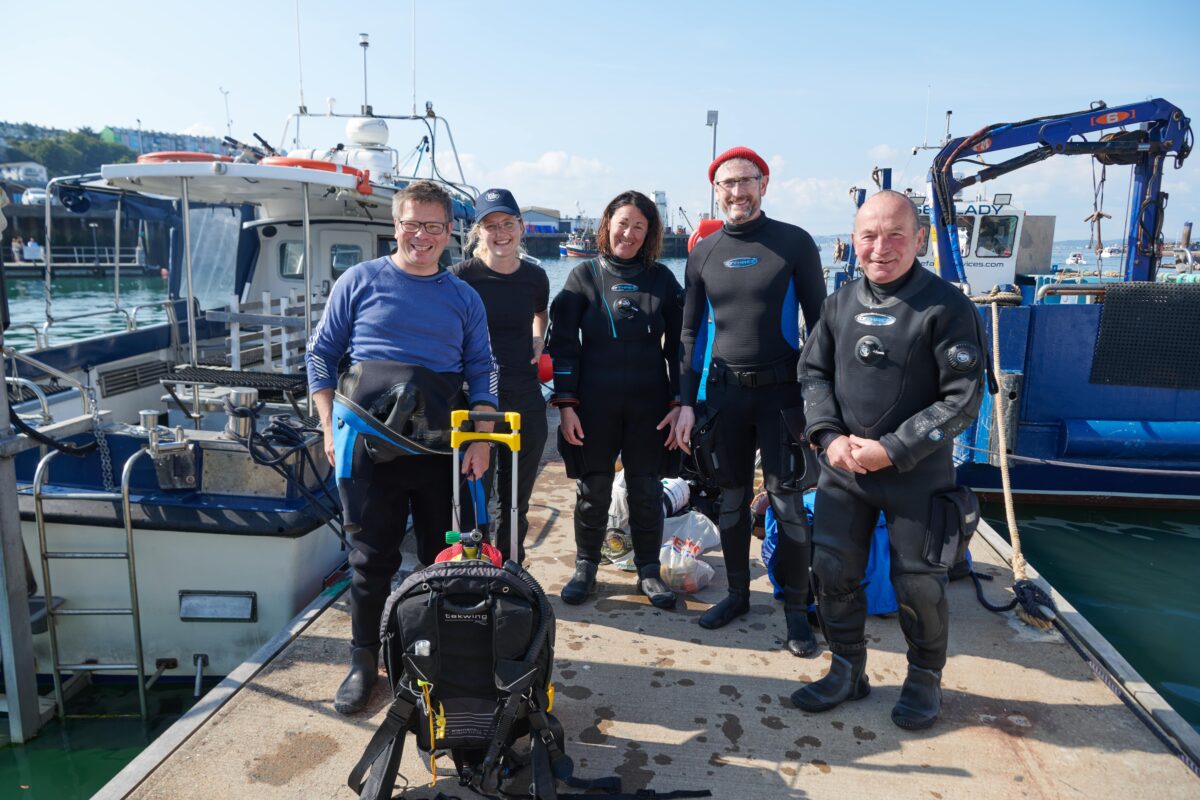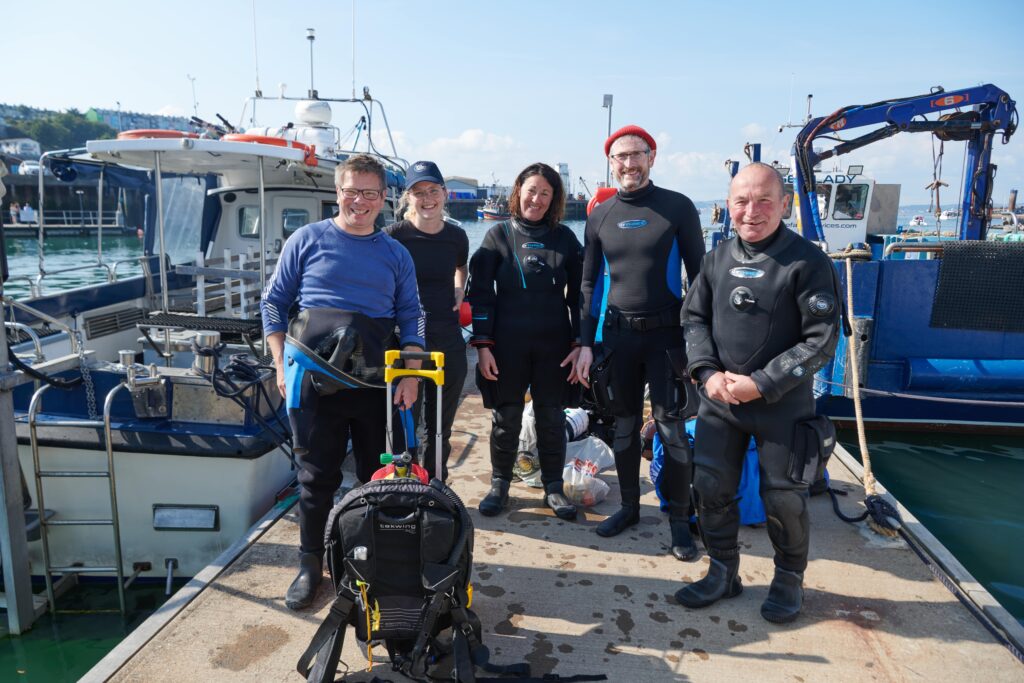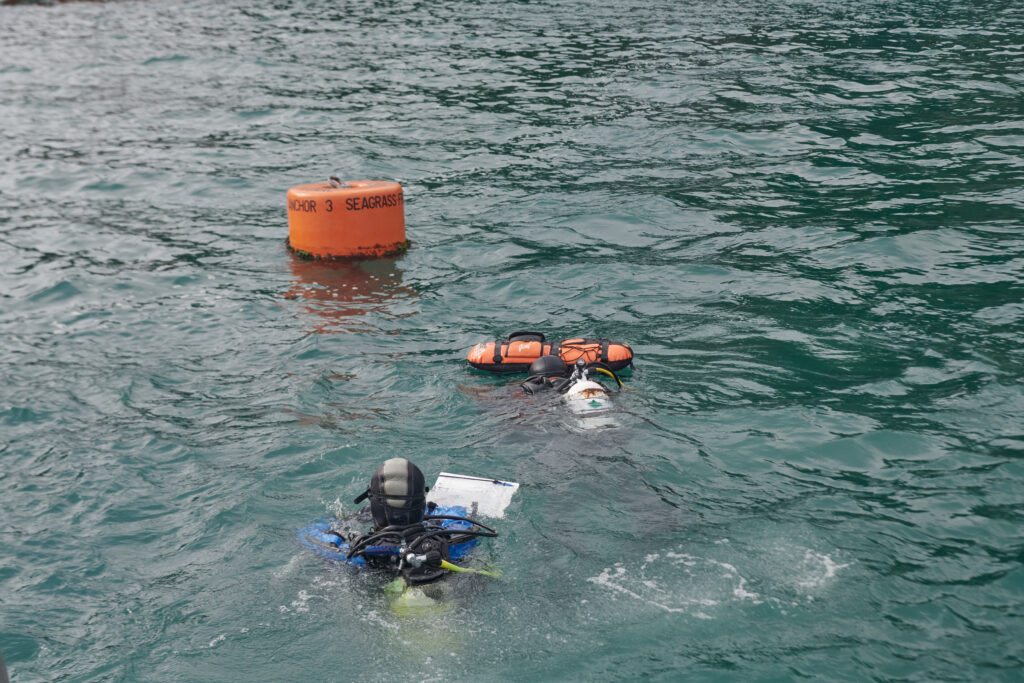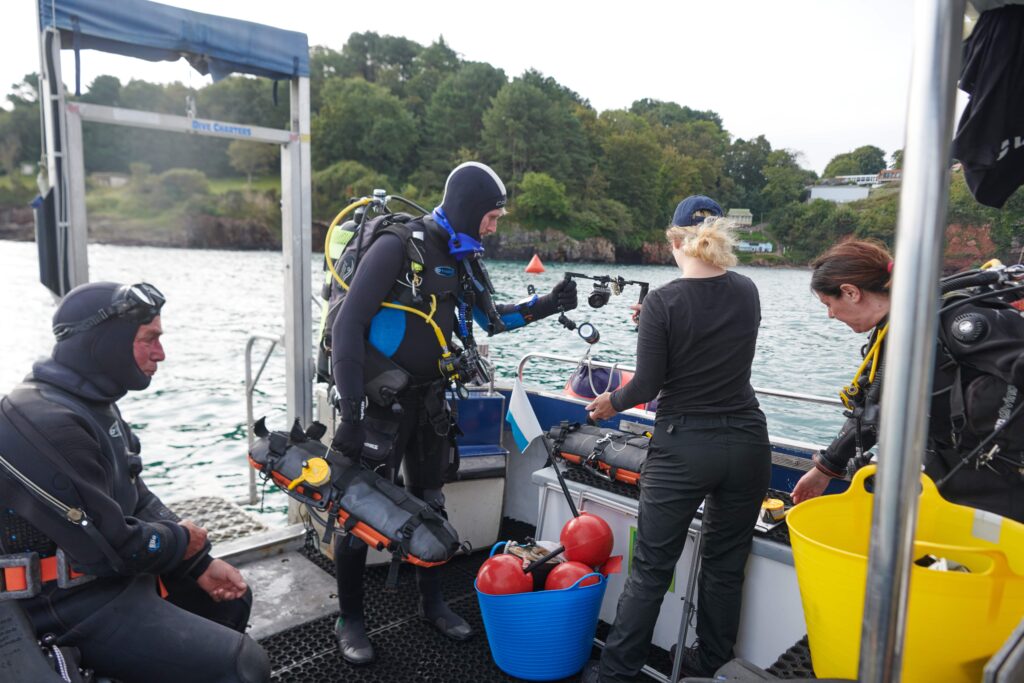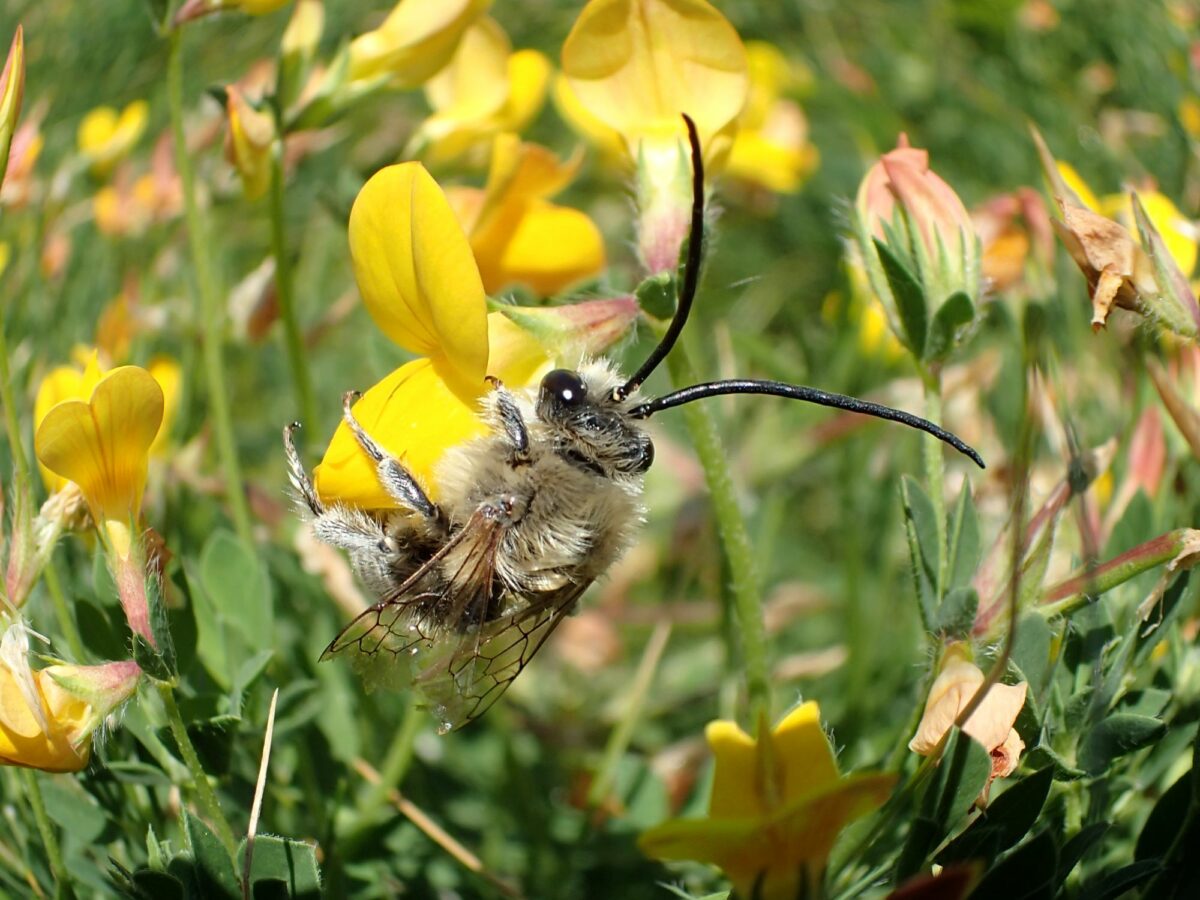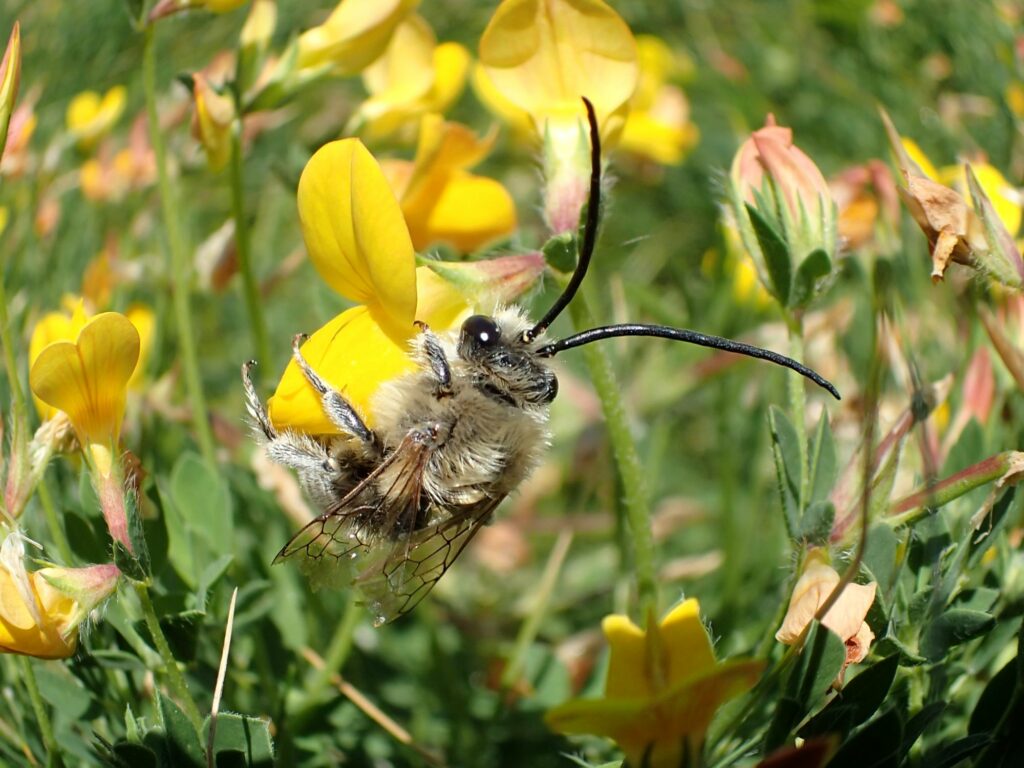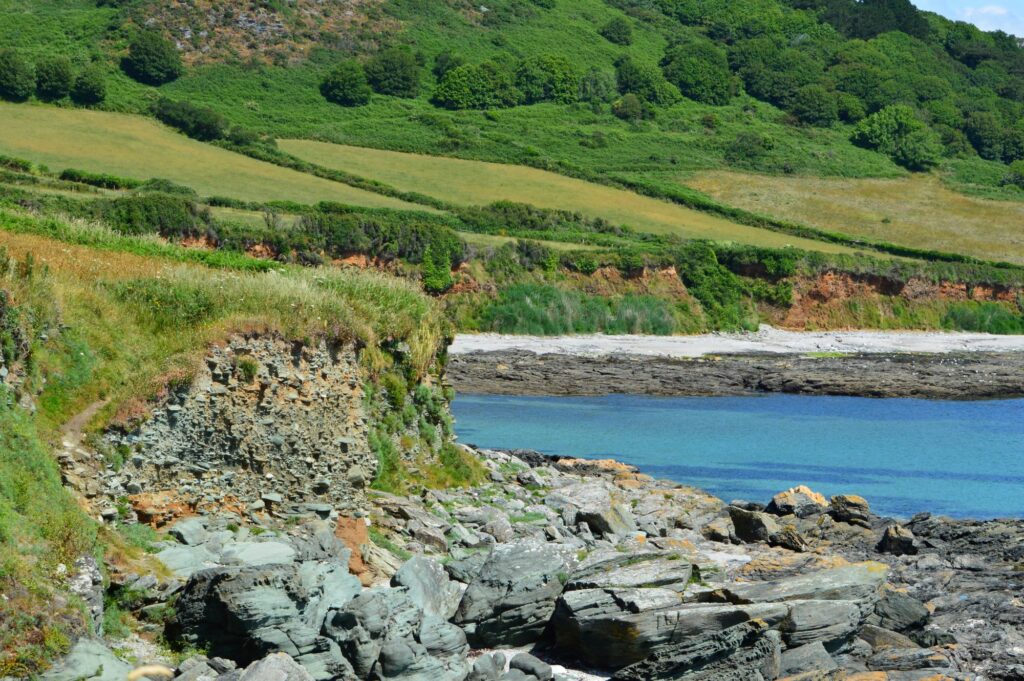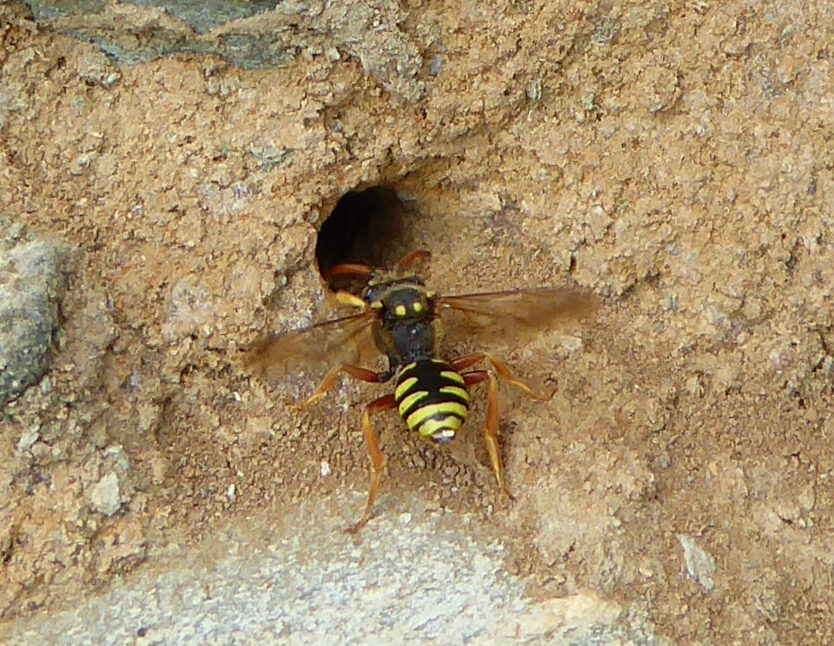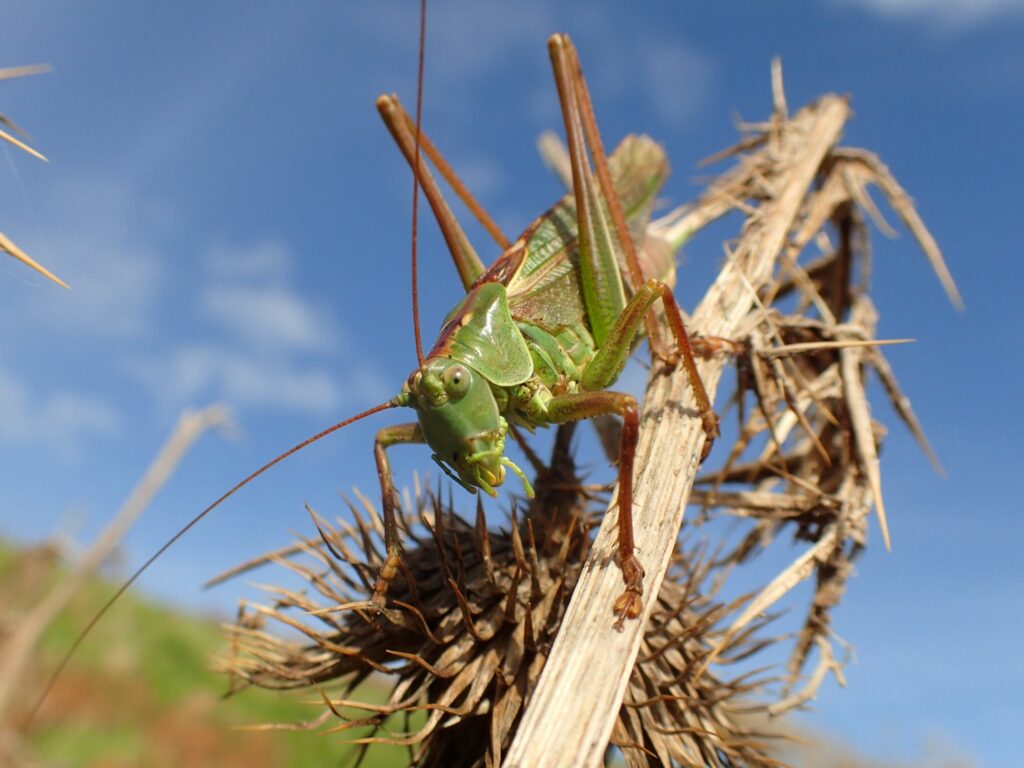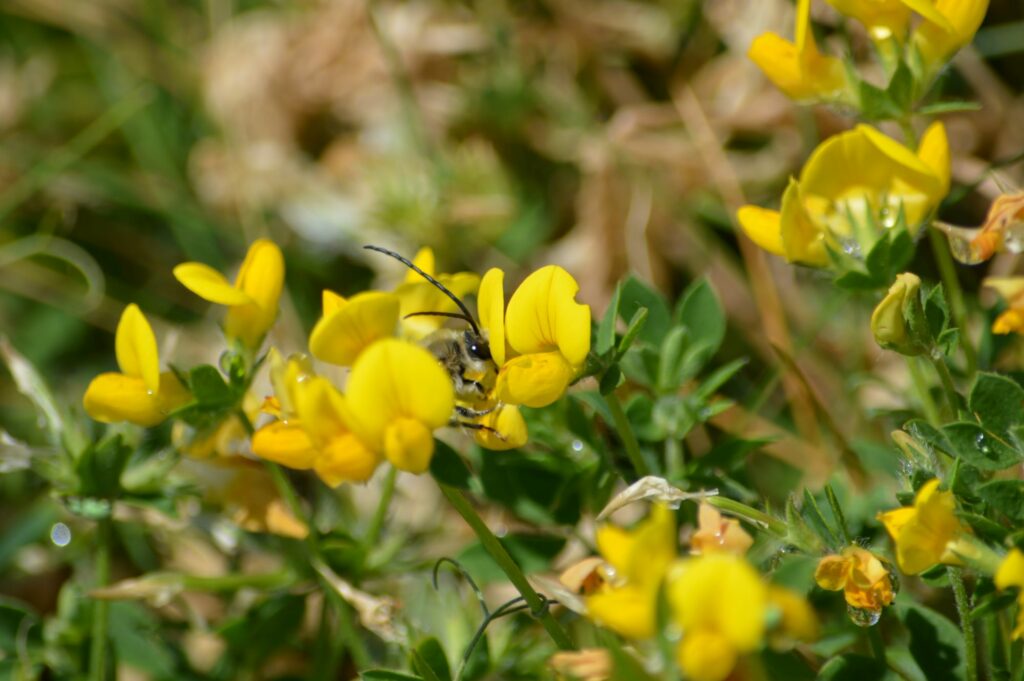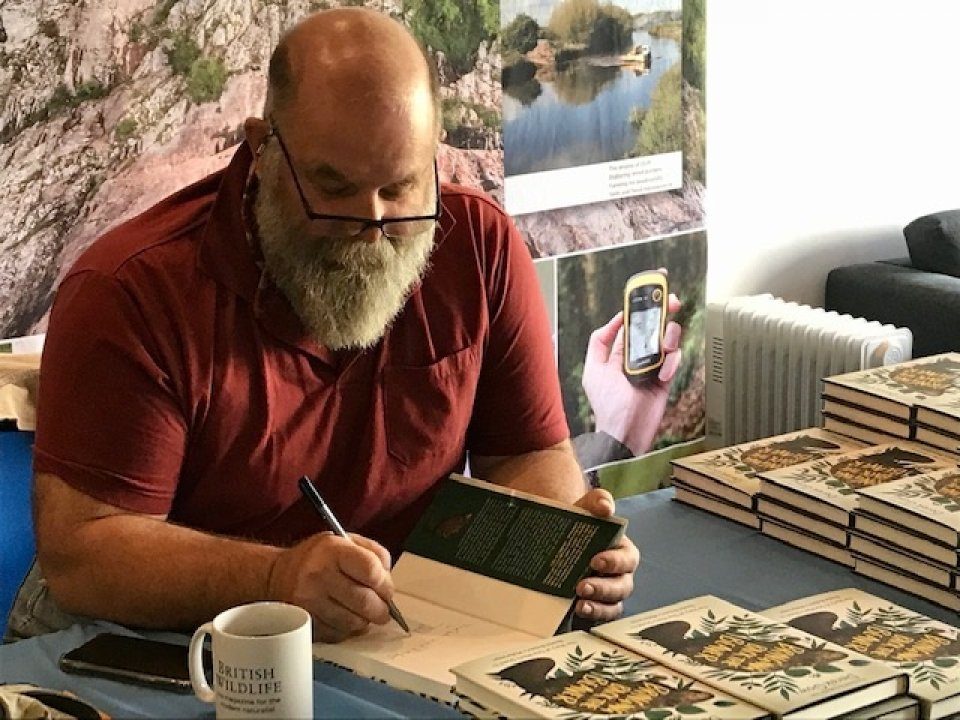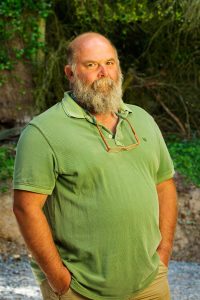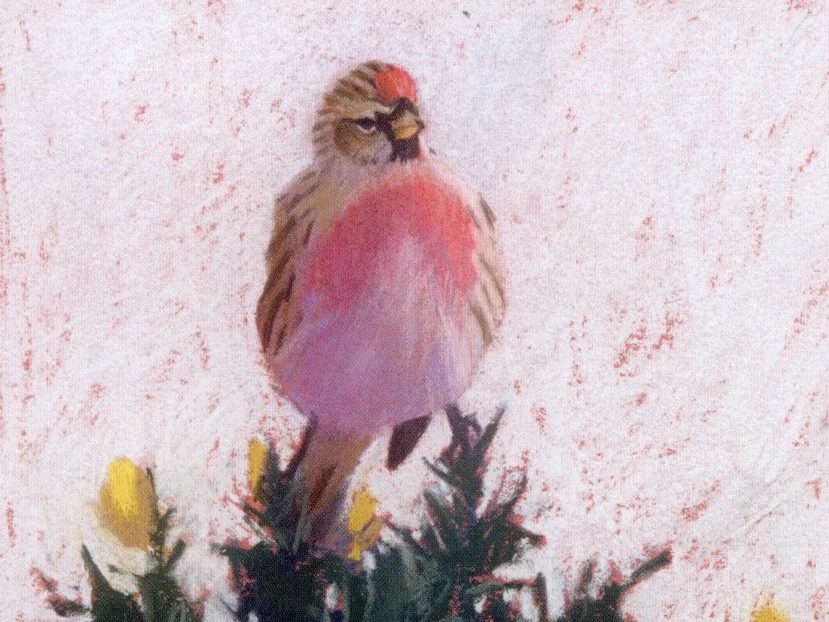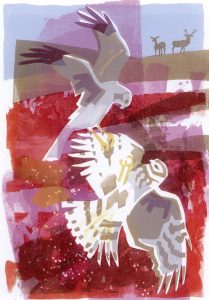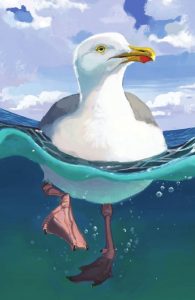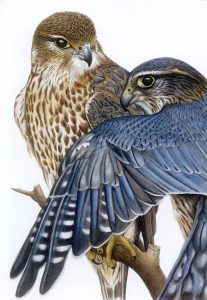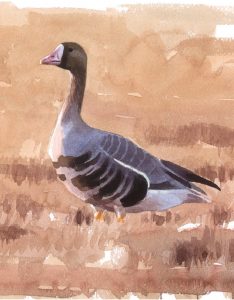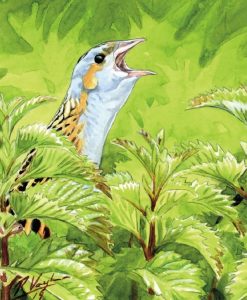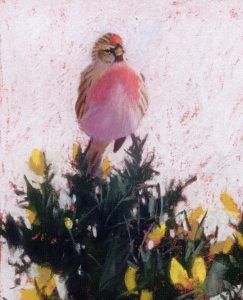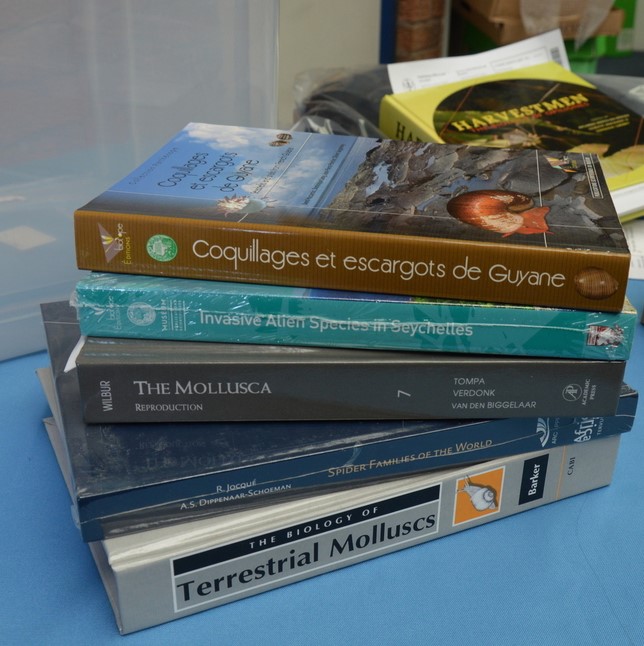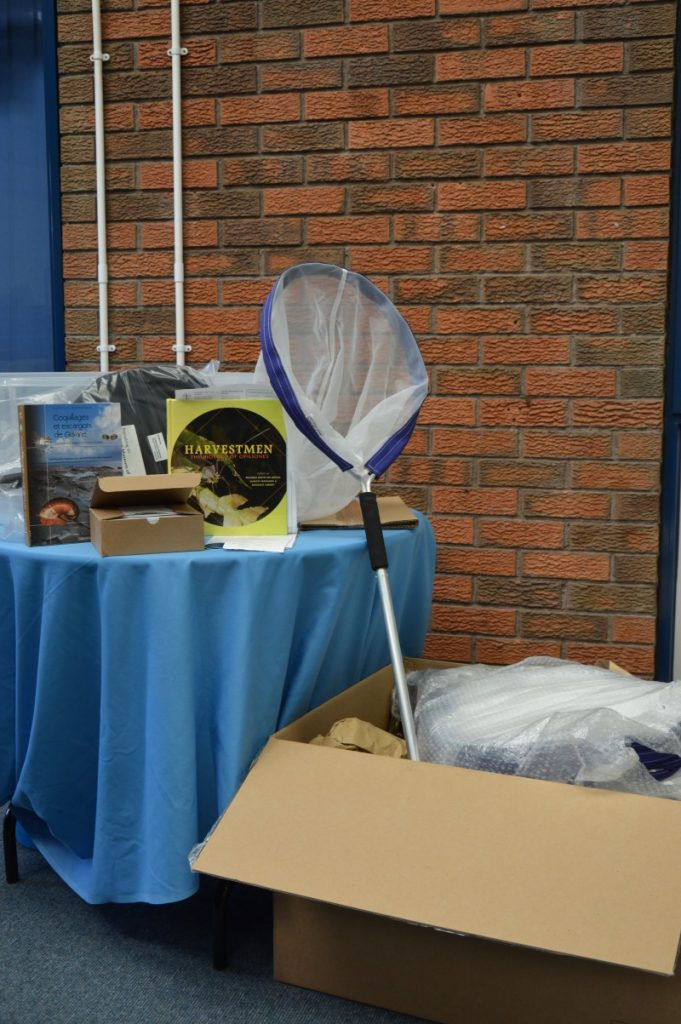This spring, traditional British lawns are out. Throughout the month of May, Plantlife urges us to let our gardens be wild with #NoMowMay. This exciting initiative encourages us to embrace a wild lawn this spring, providing plants, invertebrates and other wildlife the opportunity to make our gardens a home. No Mow May could transform your green spaces into a colourful kaleidoscope of flowers you never knew were there. From buttercups to bee orchids, here at NHBS we have had an astonishing array of wildflowers in previous years, and we are hoping that this year will be the same!
Knowing when, and how, to mow your lawn to encourage wildflower growth and minimise grass domination can be confusing, and there is no ‘one size fits all’ answer to supporting native wildlife. In anticipation of May, we outline the important things to consider when maintaining your lawn over the coming seasons.
Tightly manicured garden lawns are unable to host the diverse communities associated with a natural space. The artificially constructed environment, with uniform grass length and limited species, prevents our native wildflowers from blooming and our vital insects from settling. Lawn feeds and fertilisers often used to maintain our lawns can result in unnaturally high levels of soil fertility. Such levels can unintentionally diminish the diversity of flora within our gardens, since native wildflowers are adapted to low-nutrient conditions. Associated with higher carbon emissions, time consumption and overall cost, many are steering clear of a high maintenance lawn this spring.
A spring-flowering lawn provides a whole host of benefits for the wildlife within our gardens. Opting for a wild, native lawn provides essential breeding habitats, food sources and physical protection for a number of species. These spaces give wildflowers a chance to bloom and set seed, benefitting both insects, and the predators who rely on them.
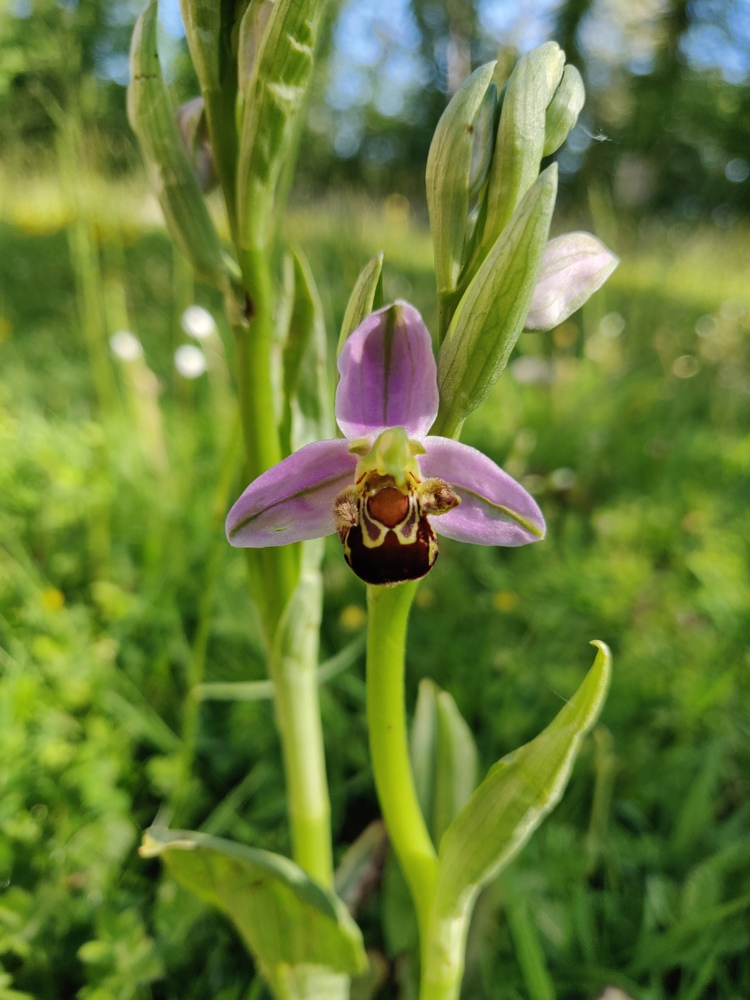
So, how and when should we mow?
Less is more! Switching up your mowing routine, or refraining from a mow in some areas, is a great way to maximise diversity in your garden. After a short time, your outdoor spaces can flourish into a haven for wildlife. From voles to vetches, and even British reptiles, watch your garden transform from monoculture to a wild refuge.
Varied grass length, wild edges, or longer patches of lawn are great for attracting local wildlife to your garden. You may find orchids, ox-eye daisy and knapweed in these longer areas, which also provide cover for small mammals that may be wandering through, and shorter areas can boost pollen availability from low-lying flowers, like buttercups and clover. Plantlife advocates for a varied mowing approach with longer patches throughout the garden, alongside shorter areas (aiming to mimic grazing pressures of different herbivorous species in the wild). For instance, you might decide to maintain shorter pathways and areas around patios, but allow other areas of your green spaces to grow freely.
It is important to remove cuttings after lawn maintenance to prevent excess nitrogen in the soil, thus reducing nitrophilic plants (species with a preference for nitrate rich habitat, typically from fertilisers and the decomposition of organic material) in your garden. ‘Cut and rot’ management can be counterproductive when cultivating wildflowers, as low levels of soil nutrition are preferred by many and will harbour the most diversity. In fact, frequent fertilisation and additional nutrition can result in an overall decline of wildflowers, leading to a dominance of nitrophilic plant species.
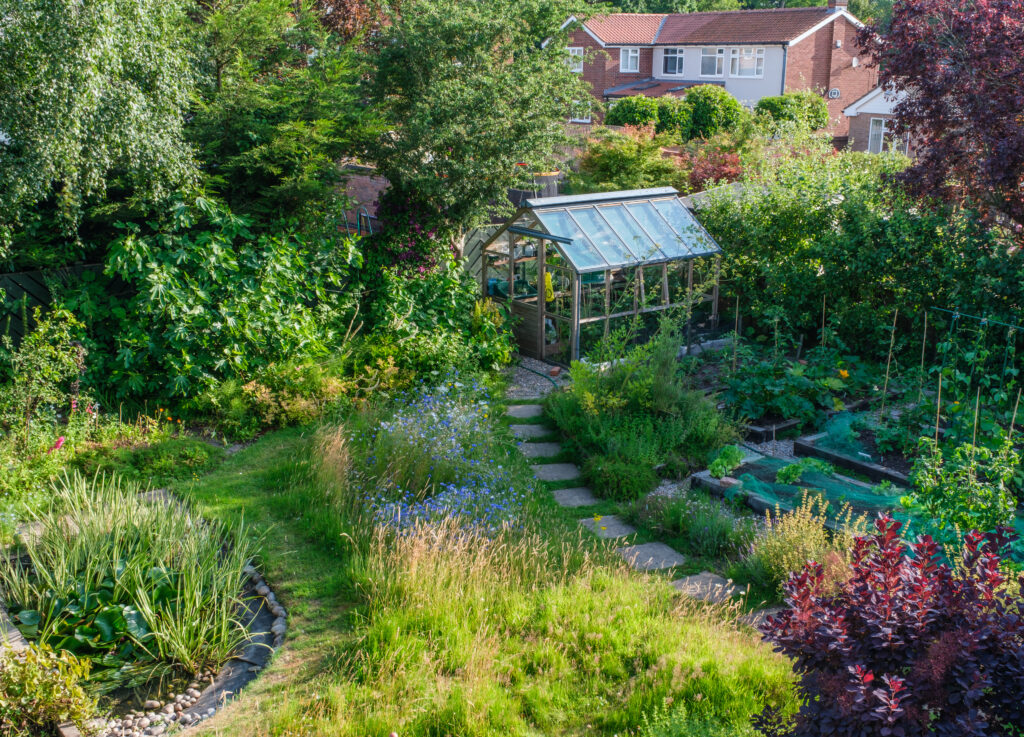
Knowing when, and how, to mow during the year is key to maximise flowering of wildflower species, while simultaneously preventing grass domination: to do this, it is generally recommended to mow three times a year; early spring, late summer and in autumn.
A 3-inch, early spring mow is beneficial to kickstart the season, promoting early growth and blooming. An early mow can also help to tackle nitrophiles, like nettles and cow parsley. This can help to prevent competition, allowing wildflowers to grow undisturbed. However, be wary of mowing too early, as this can prevent wildflower seeding and will impact your gardens growth next year.
A summer mow in late July, or August, removes the previous growth, encouraging the bloom of wildflowers later in the season. As far as insects are concerned, the later the mow, the better. Insect species tend to hatch in the warmer parts of spring and summer, so a mow in late August will prevent harm to hatching individuals.
Around late November, an autumn mow can help to promote reseeding and encourages germination in the following spring. Allow the wildflowers in your lawn to finish flowering and let them go to seed, a mow after this allows the seedheads to disperse seeds into your lawn. An autumn cut can also keep grass growth under control, further encouraging germination.
There are also certain considerations to be wary of when forming wild areas in your garden. These habitats will attract a great number of species, who may make your lawn a home. Best practice involves leaving an area of your lawn untouched to house these species, but if you are looking to tidy up your garden after No Mow May, wildlife must be considered. Wildlife in our lawns can be harmed in the process of tidying up our outside spaces. It is recommended to disturb, or walk through patches to be maintained to shoo species from the area. On the first mow, start with a higher cut to give smaller animals a chance to escape. When mowing the lawn, start with garden paths and areas of high footfall, working toward the edges of the garden. This, again, provides wildlife with an escape route through the boundaries of your garden. If your garden has fences or hedgerows, a wildlife corridor along your borders is another way to support visiting animals. Untouched, or lightly managed, strips along these areas can provide a safe space for travel around the garden, providing cover and protection from predators.
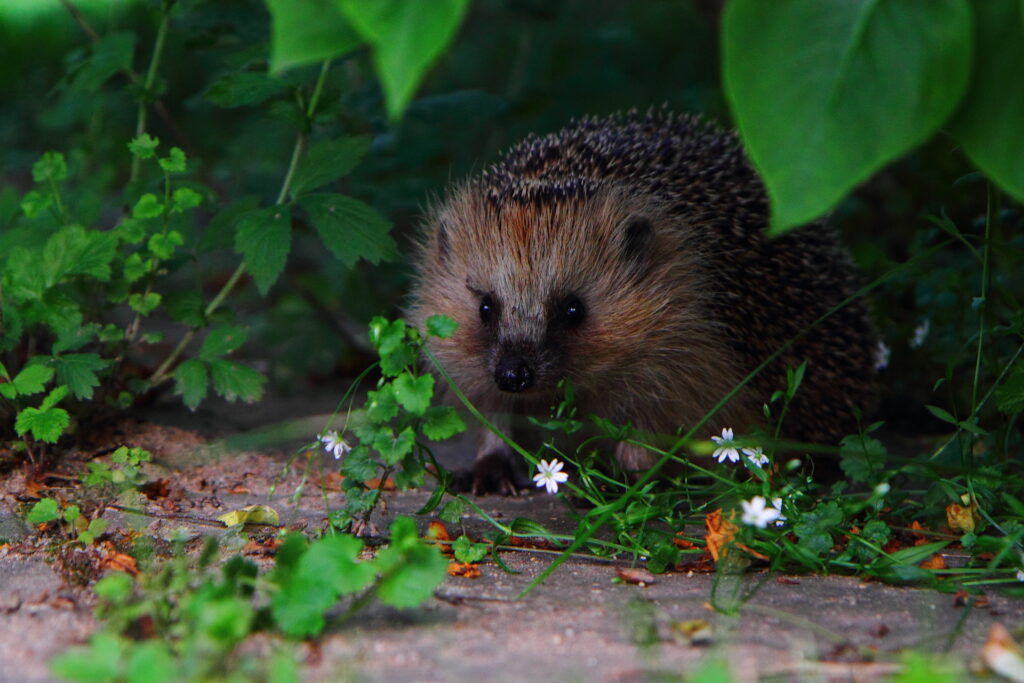
How can we prepare for No Mow May?
If you currently use fertilisers, lawn feed, moss killers or pesticides, abandoning the use of these additives in your garden will allow the soil to recover from these harmful chemicals. This can provide microscopic and invertebrate soil communities a chance to recover, improving the overall health of your soil.
For some of us, early bloomers may already be present in our gardens. Cowslip, violets and primroses may be popping up on our lawns, showcasing the first few flowers of the season. You may consider allowing these to go undisturbed, giving them a head start for spring. Having said that, the best way to prepare for No Mow May is a 3-inch April cut to encourage a strong period of spring growth.
Whether or not you decide to mow the lawn this spring, consider leaving an area of your garden wild. Whether this be a natural lawn or rough borders, we hope you feel inspired to take part in this year’s #NoMowMay!

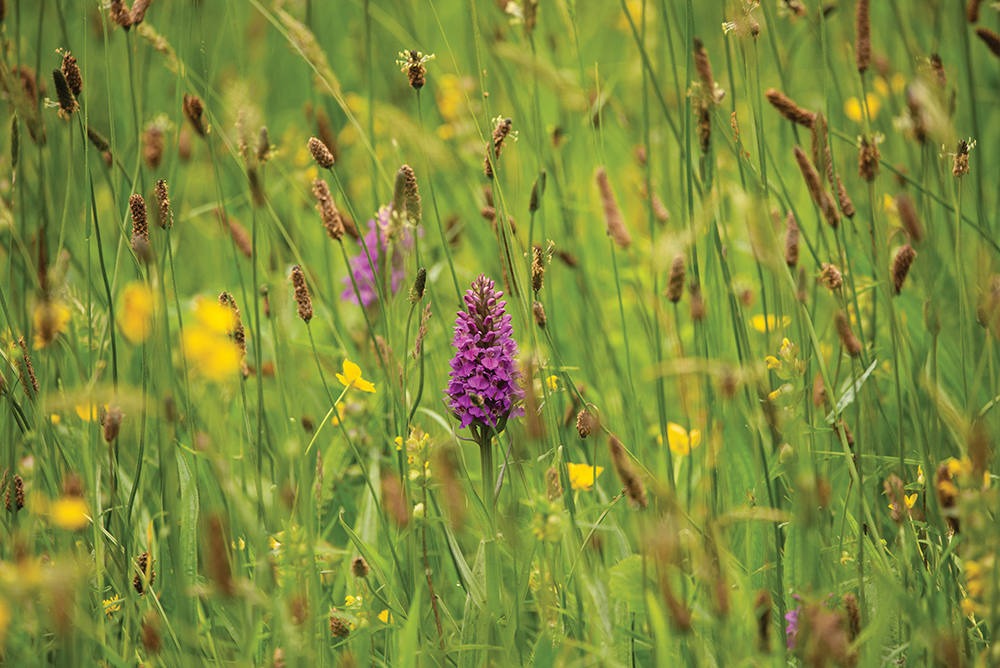
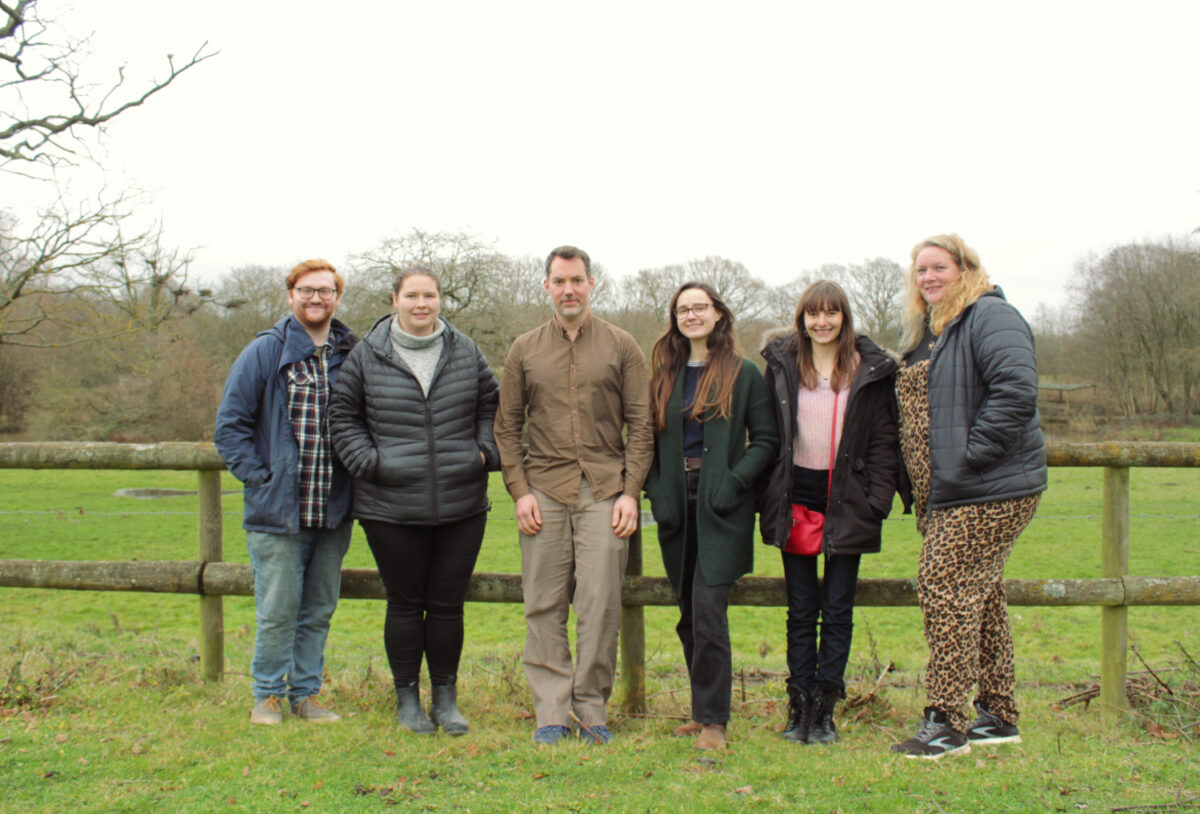

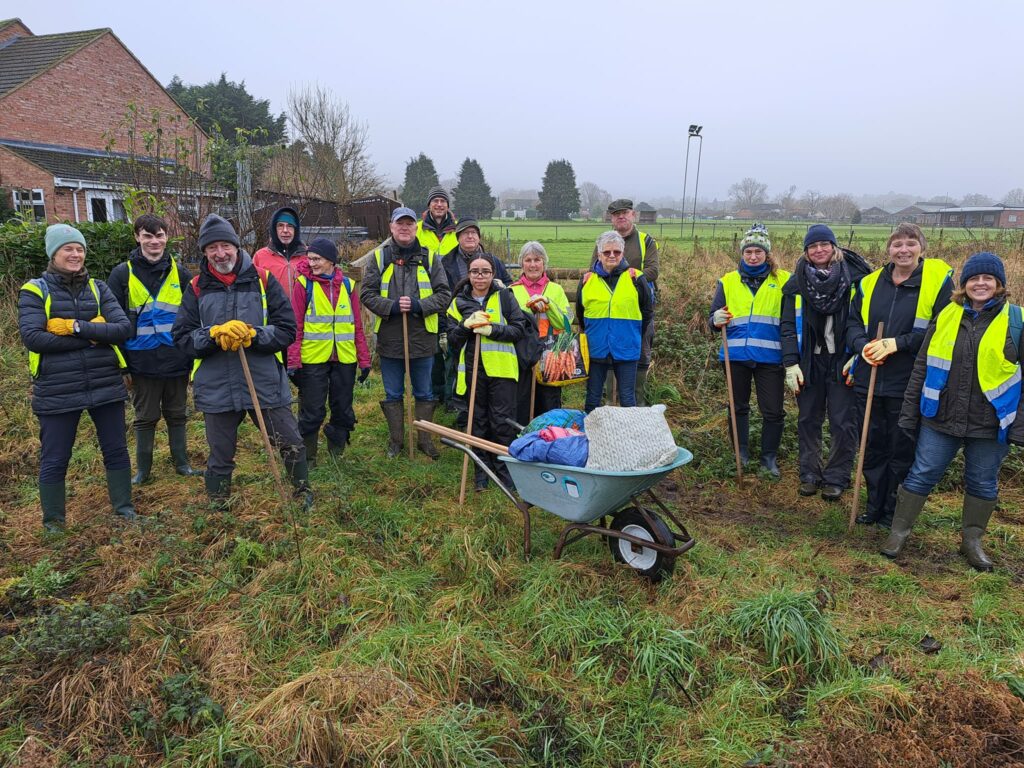
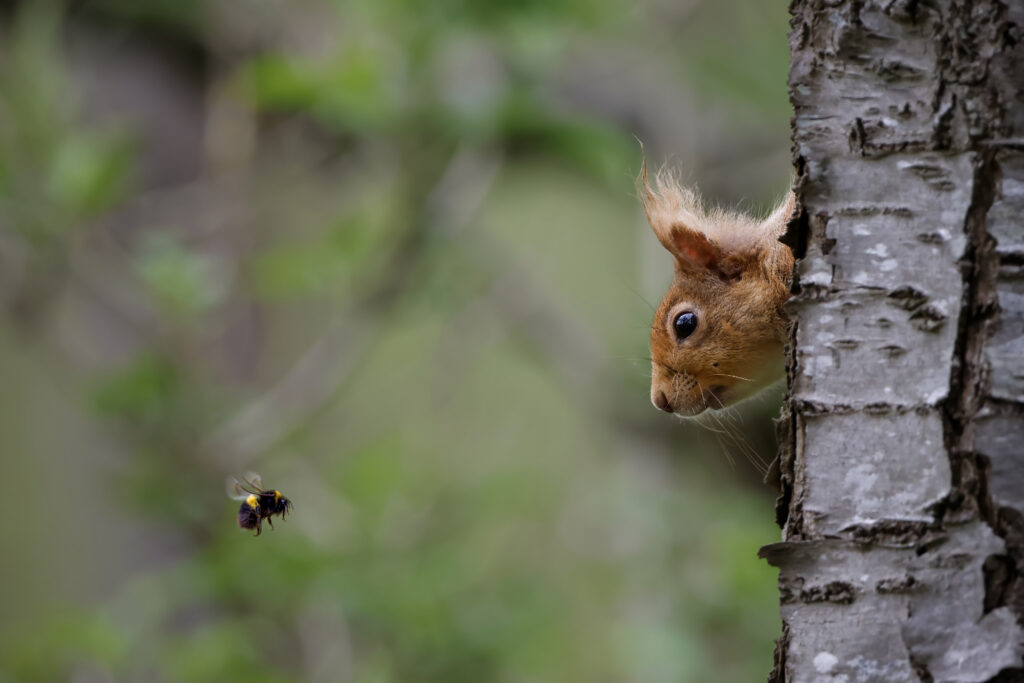
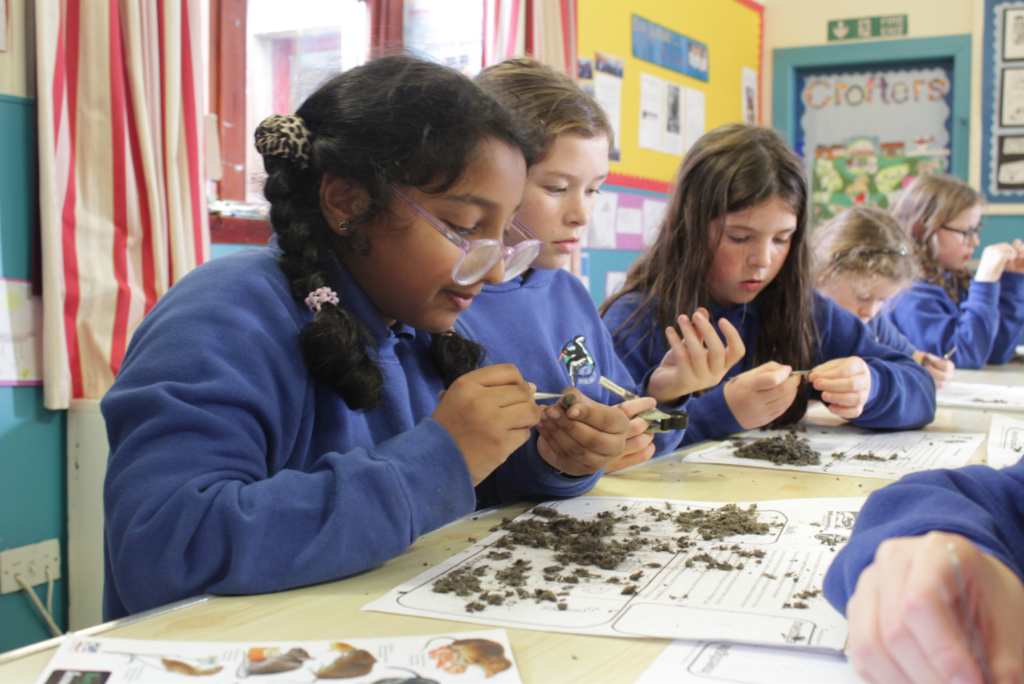
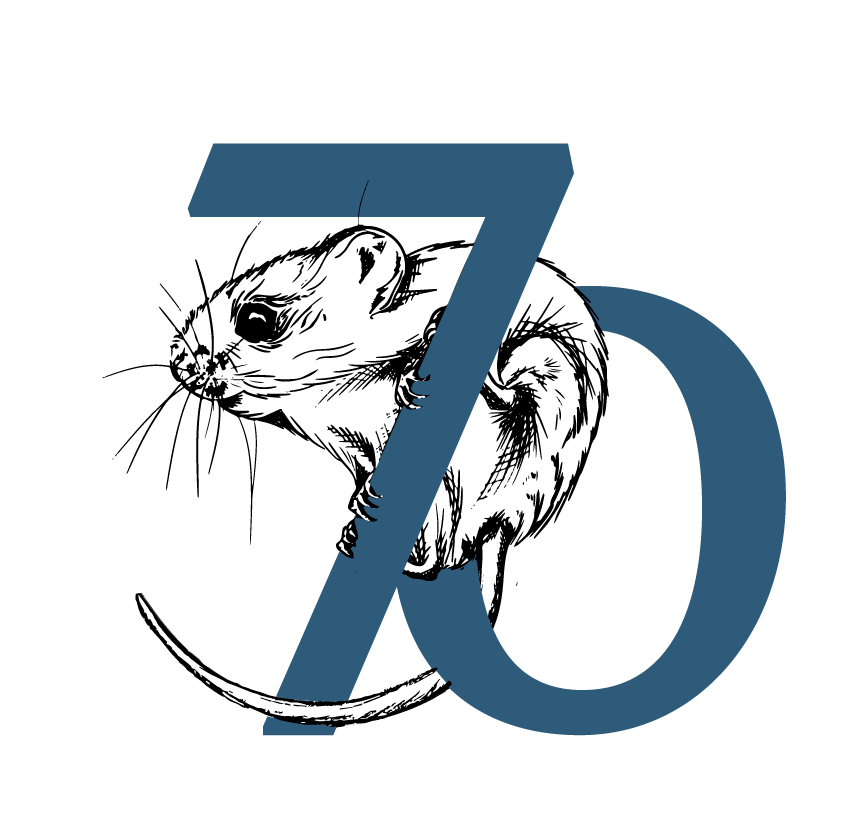
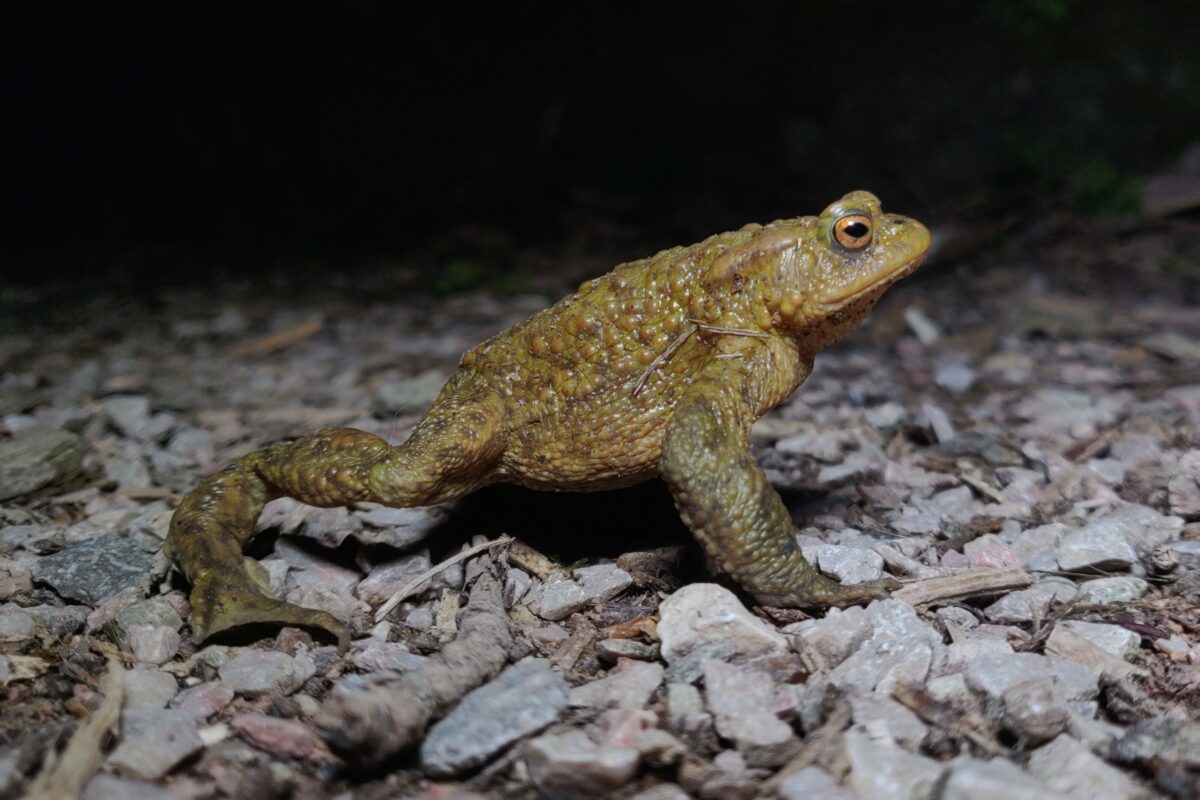
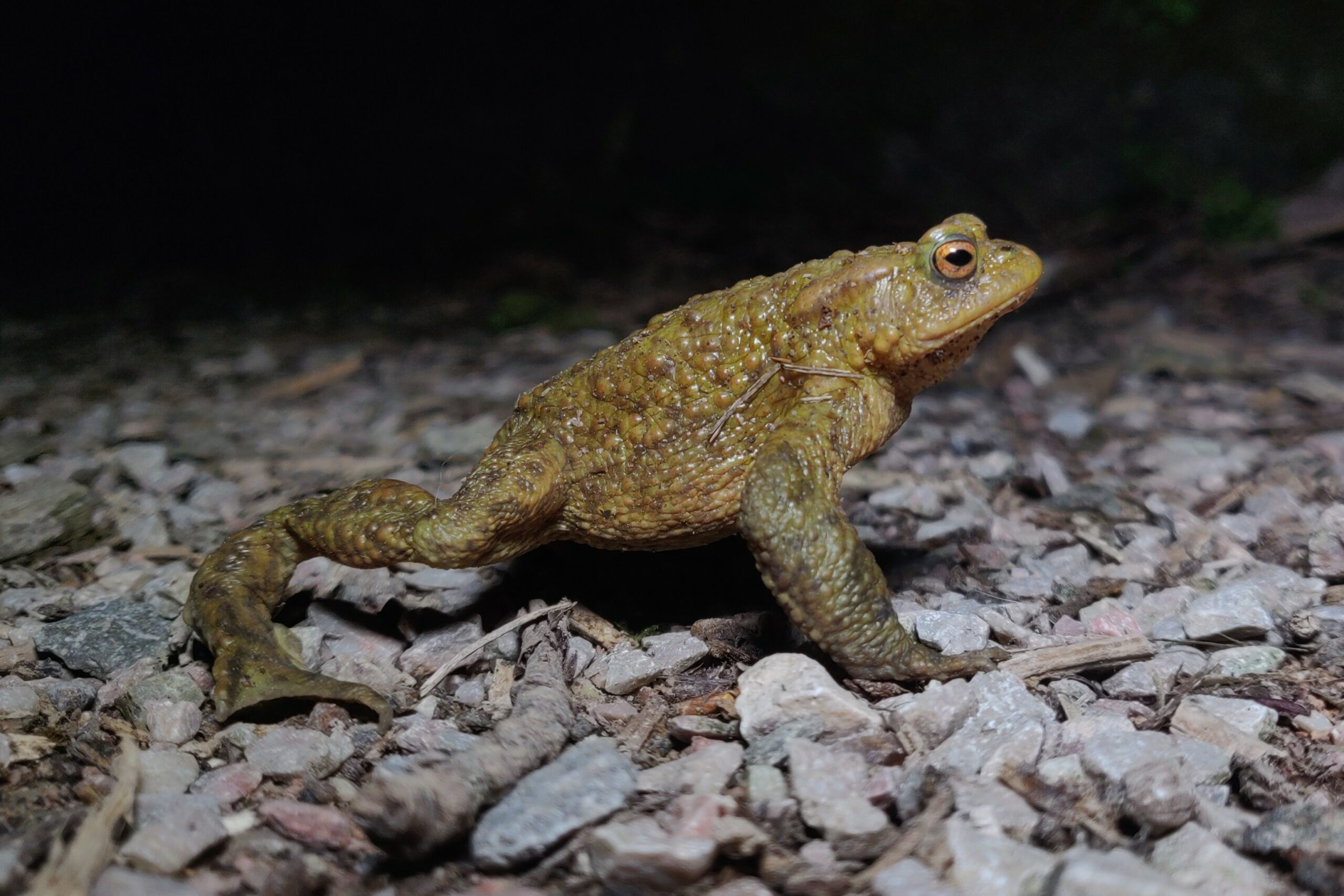
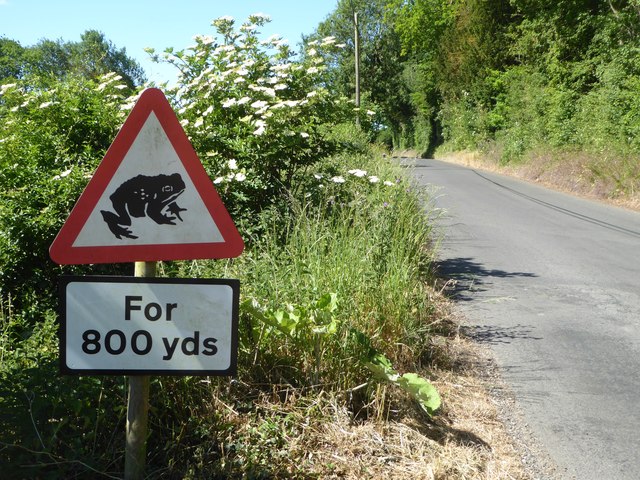
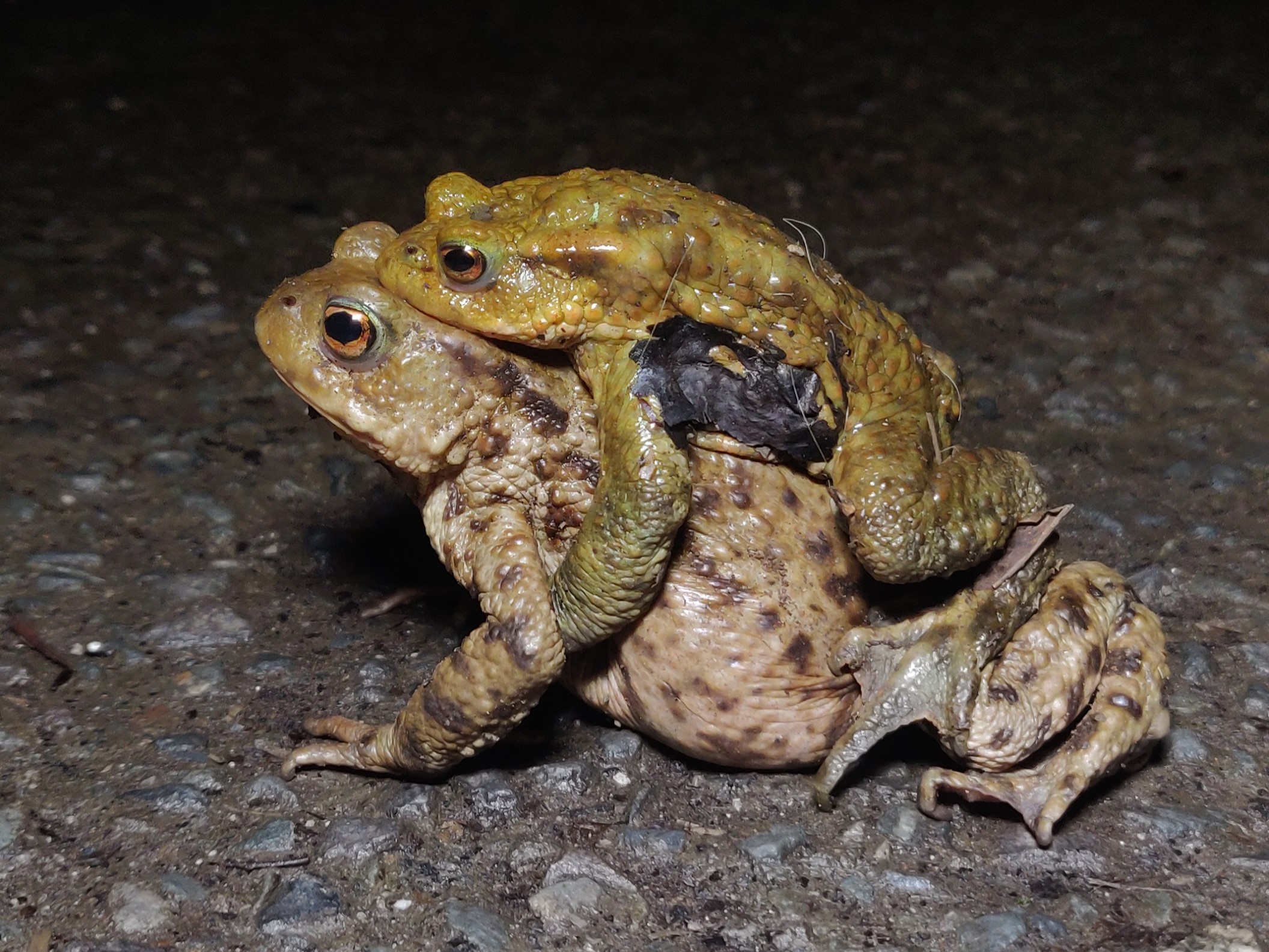
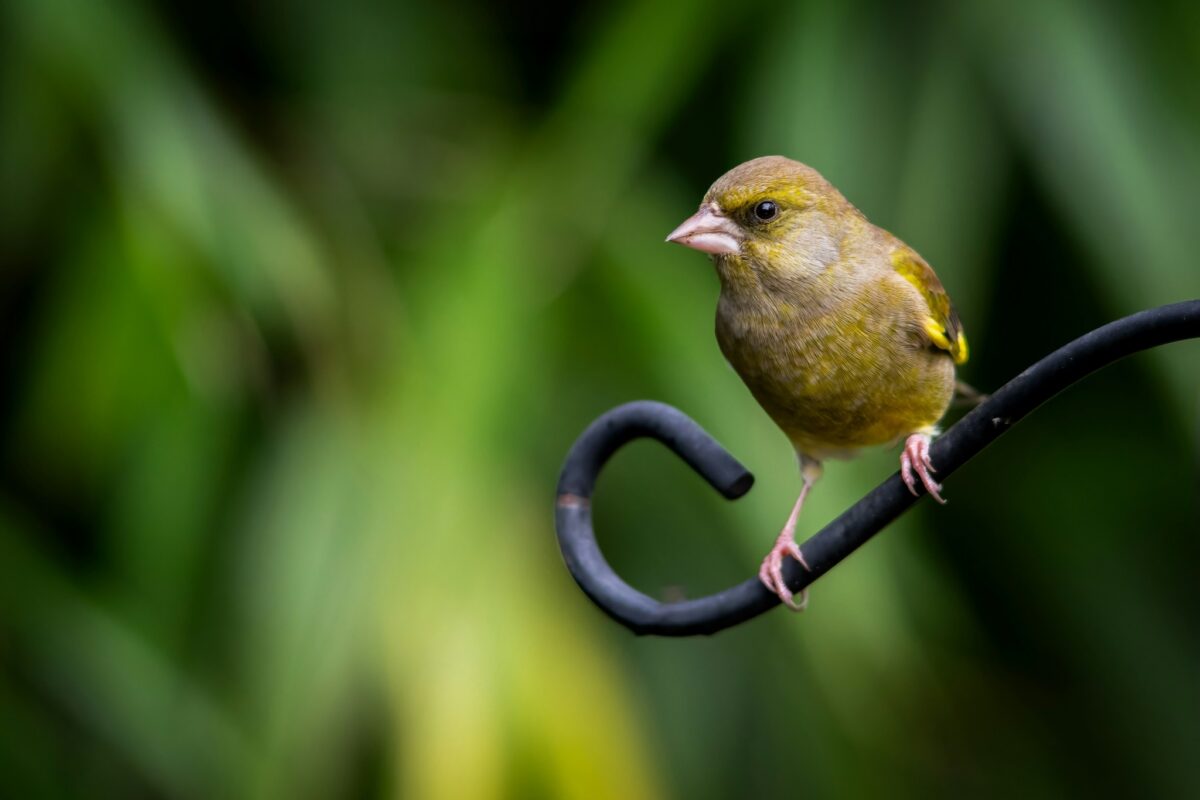
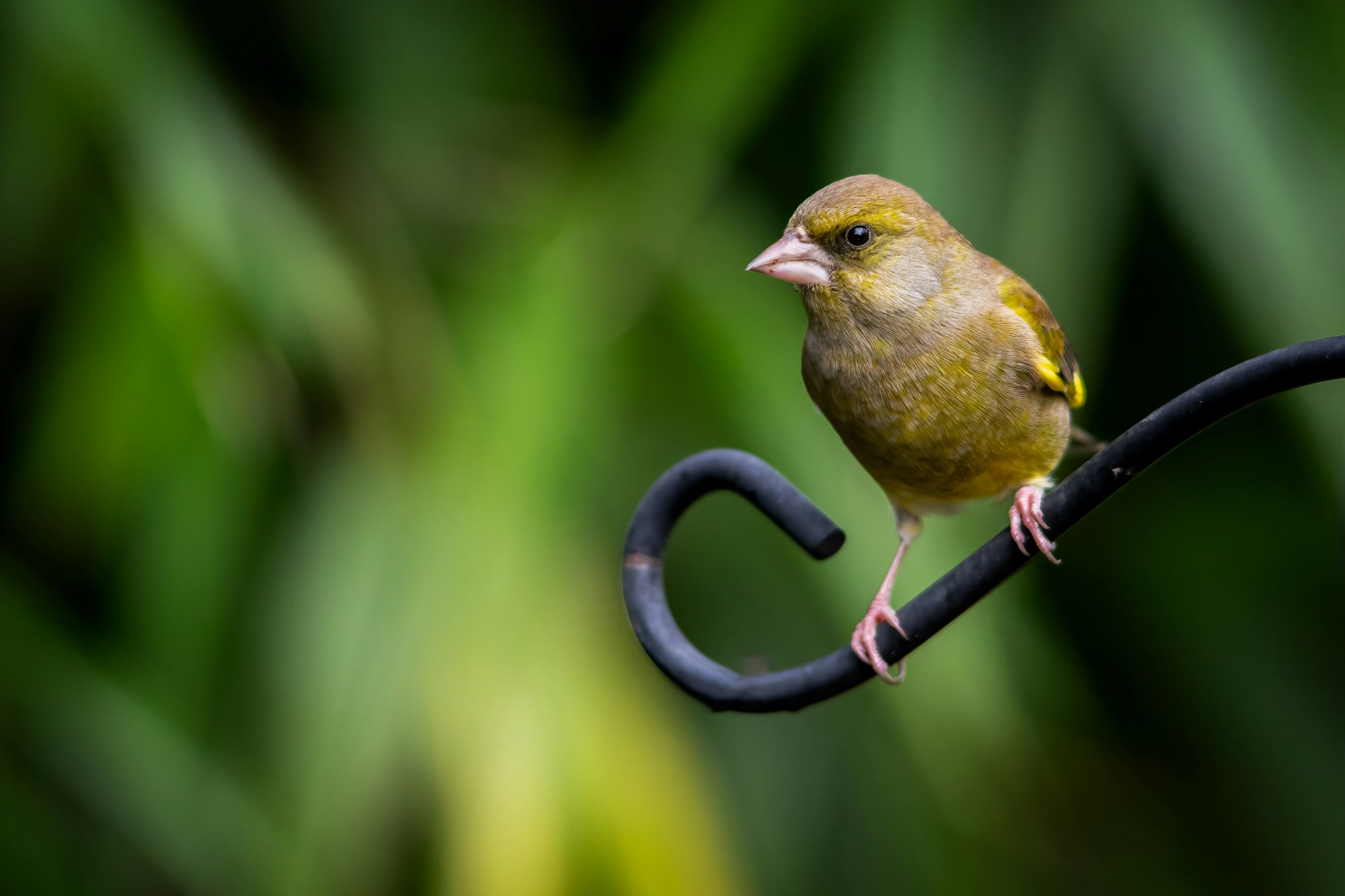
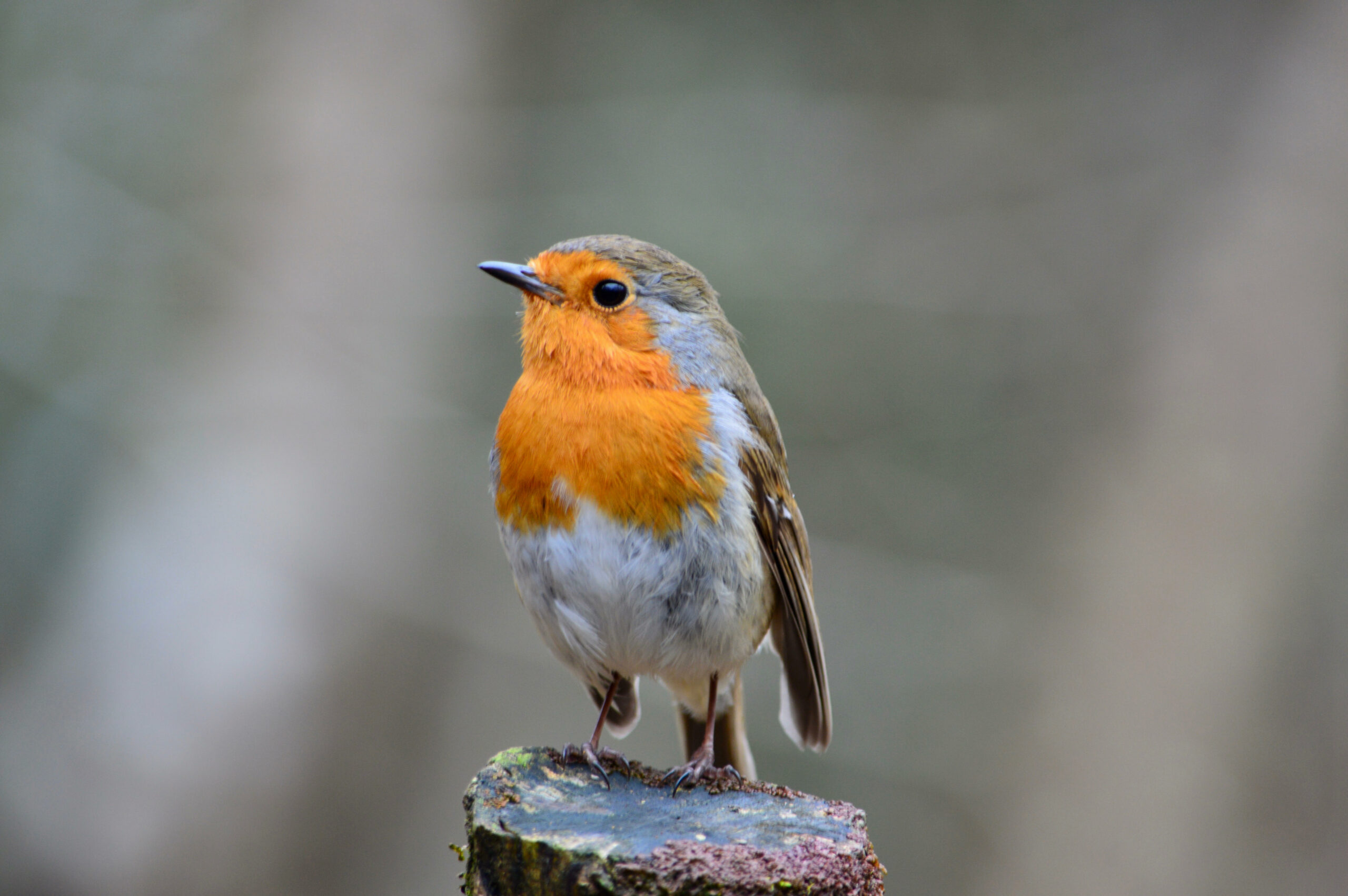
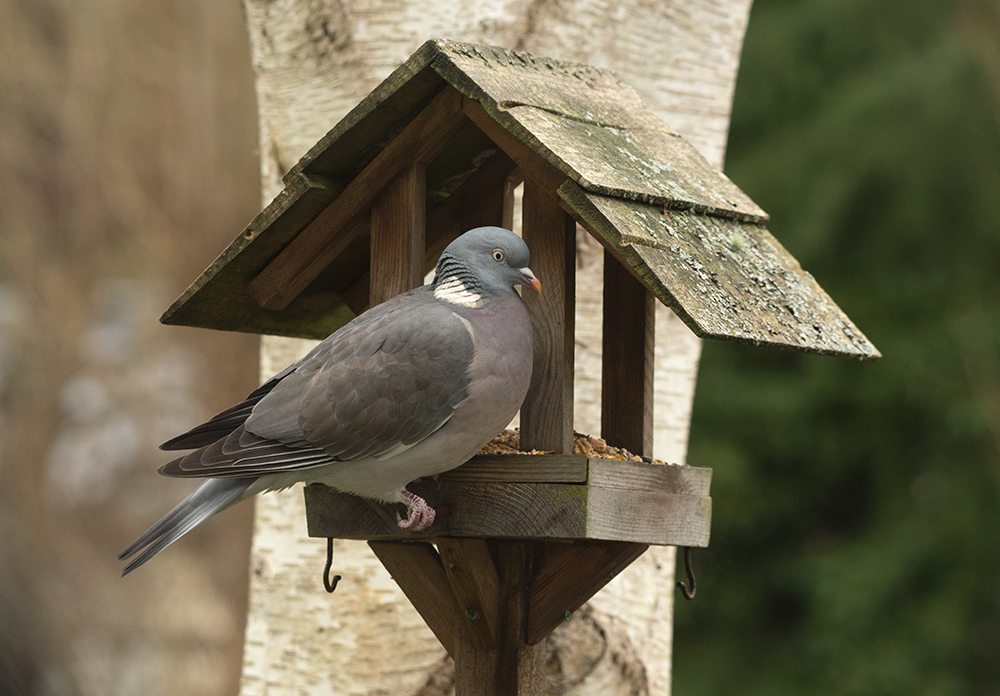
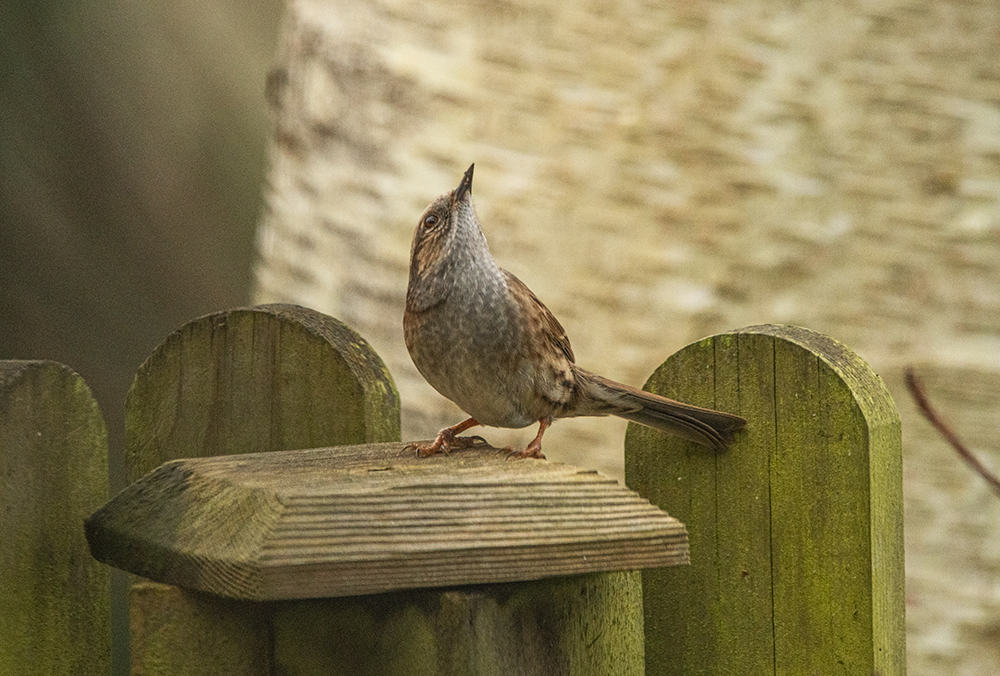
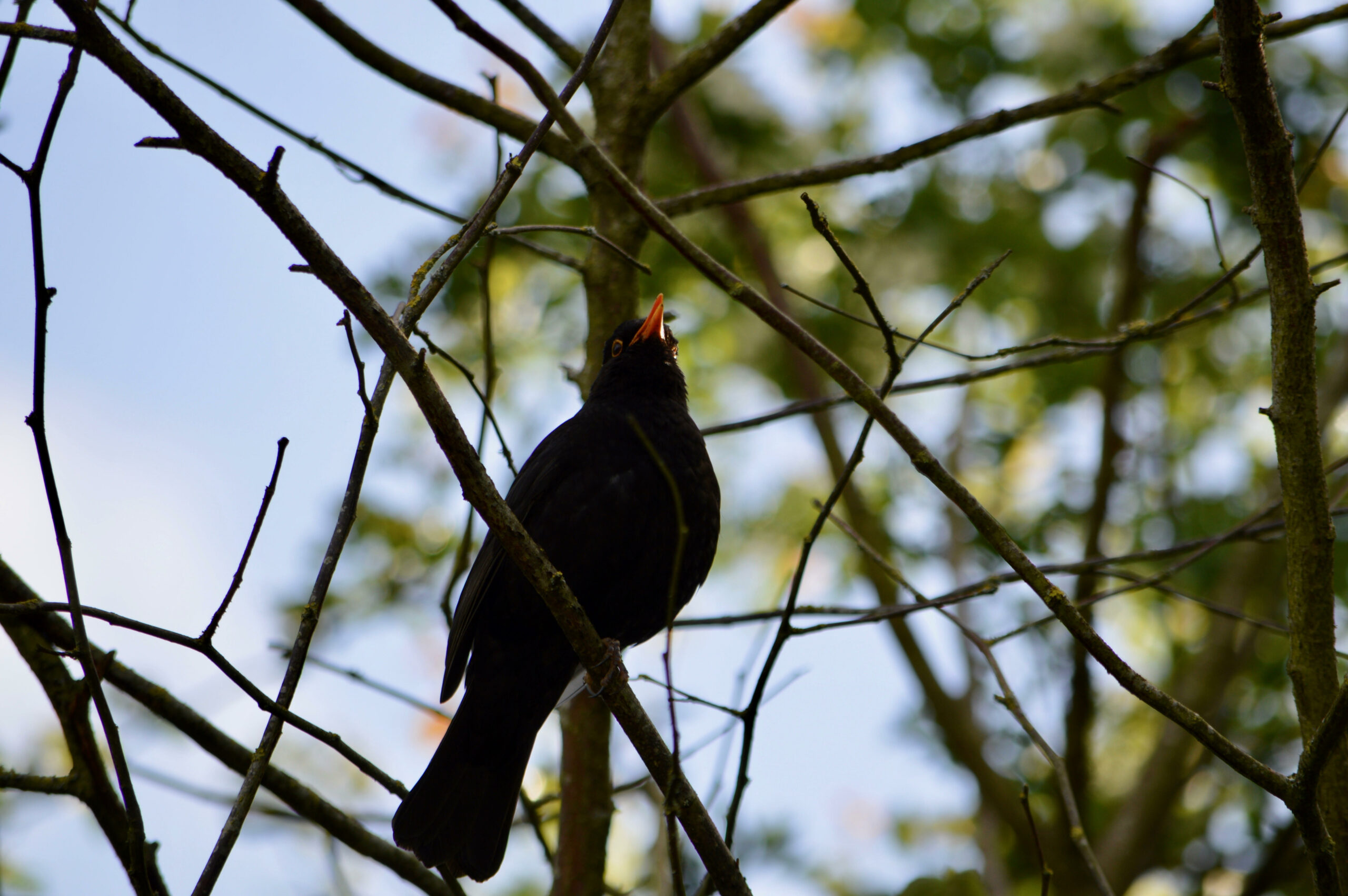
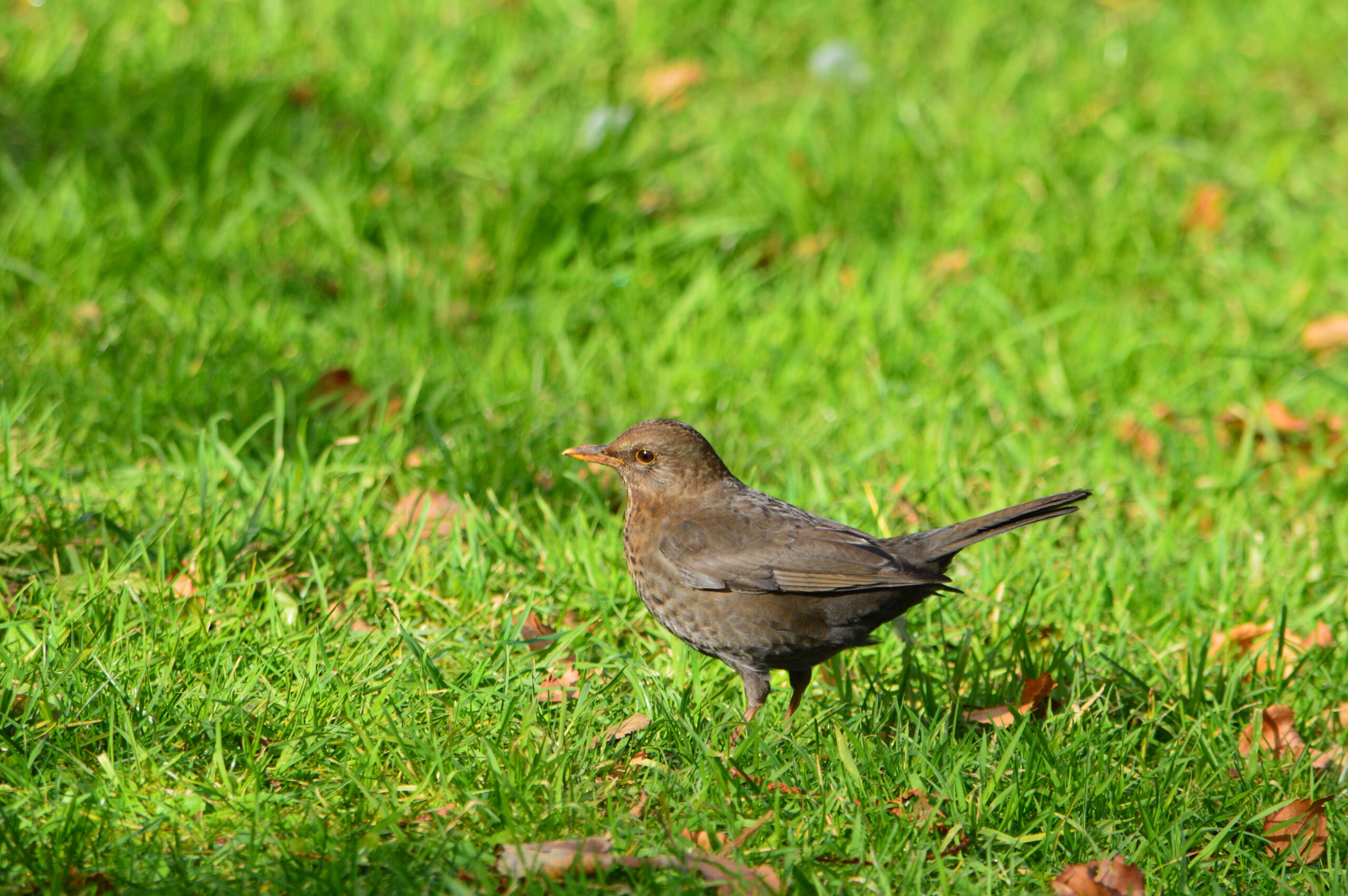
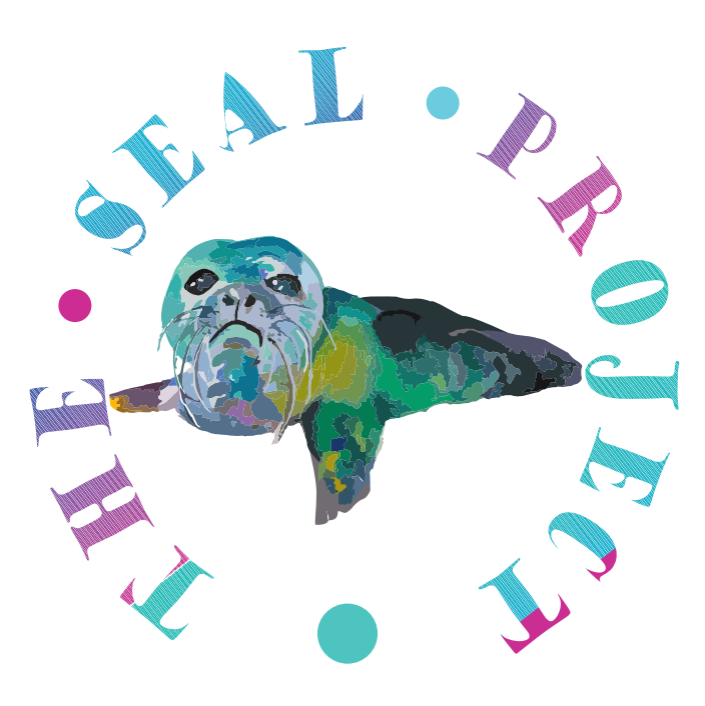
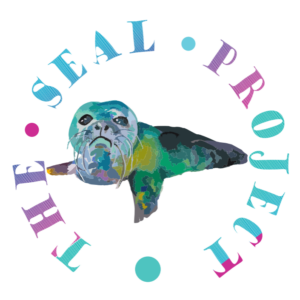 The Seal Project is an environmental conservation charity based in Brixham, Devon, which
The Seal Project is an environmental conservation charity based in Brixham, Devon, which 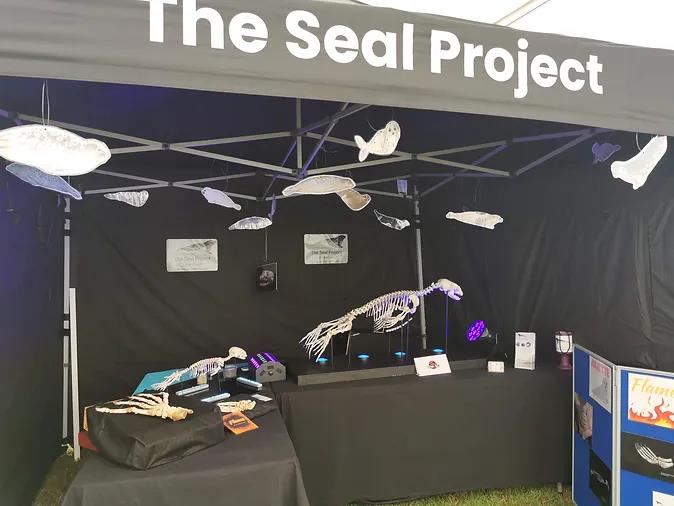
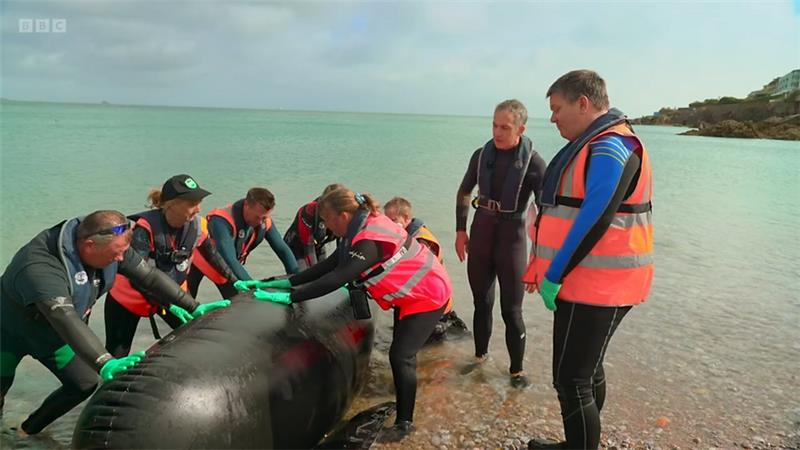
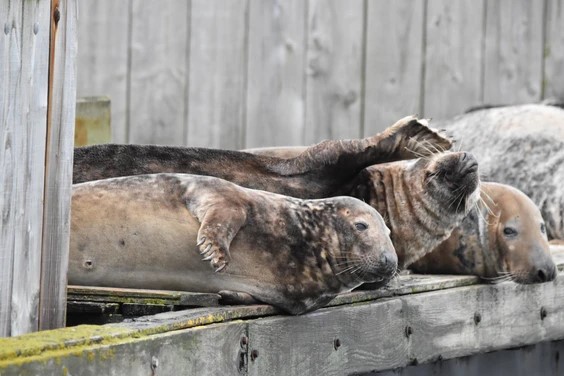
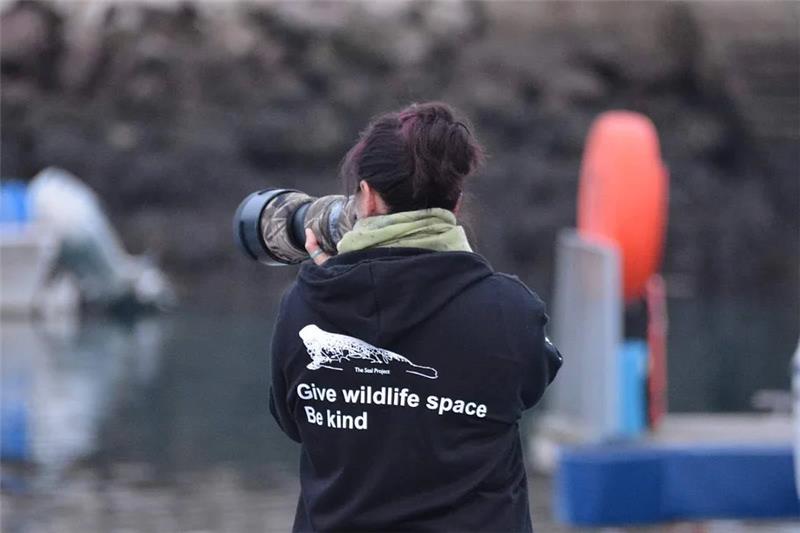
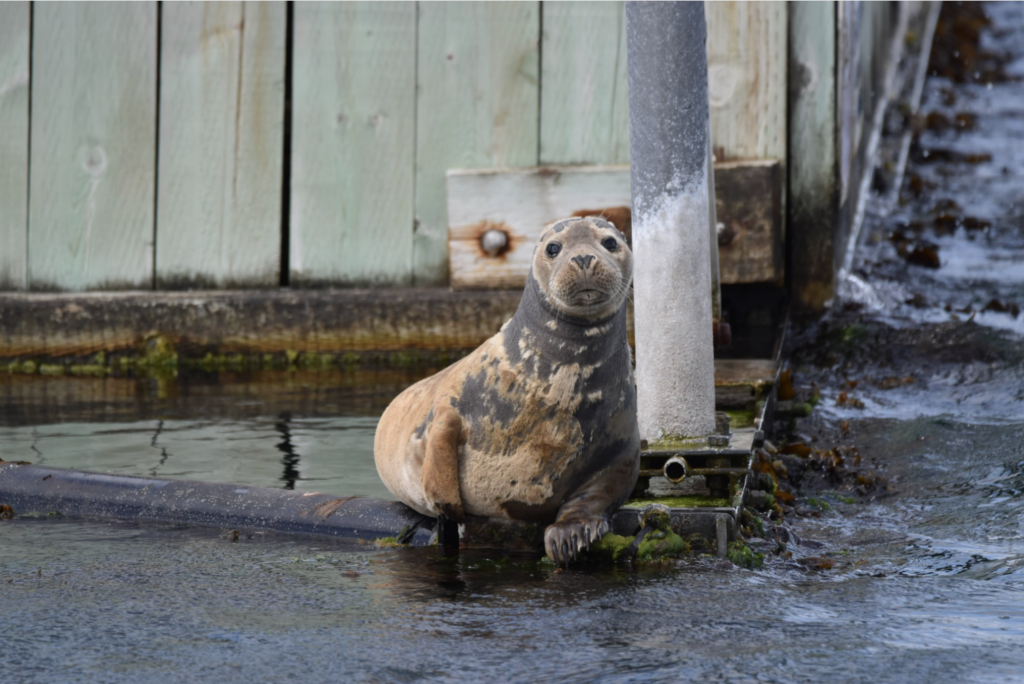 ‘Easter Bunny’ is one of my favourite seals and can still be seen today resting around the local area. We first encountered him in 2020 as a juvenile seal entangled in industrial strength plastic. He vanished and we feared the worst, however a week later, on Easter Sunday, he was back in the same haul out spot on a girder in the marina, freed from the plastic. At the time of our first sighting, he appeared to have a bunny shape on his right-hand side (alongside a letter ‘A’), but this time the bunny seems to have disappeared with the ‘A’ is clearly visible. He reappeared regularly over the coming years, often seen for a few days and until the last several months always in the same spot, before disappearing for a few days and coming back again. We have seen him elsewhere a number of times, and last winter he was seen socialising with two ‘tagged’ seals (former rescued seals with plastic rear flipper tags for identification), so we look forward to seeing if they return to the area soon too.
‘Easter Bunny’ is one of my favourite seals and can still be seen today resting around the local area. We first encountered him in 2020 as a juvenile seal entangled in industrial strength plastic. He vanished and we feared the worst, however a week later, on Easter Sunday, he was back in the same haul out spot on a girder in the marina, freed from the plastic. At the time of our first sighting, he appeared to have a bunny shape on his right-hand side (alongside a letter ‘A’), but this time the bunny seems to have disappeared with the ‘A’ is clearly visible. He reappeared regularly over the coming years, often seen for a few days and until the last several months always in the same spot, before disappearing for a few days and coming back again. We have seen him elsewhere a number of times, and last winter he was seen socialising with two ‘tagged’ seals (former rescued seals with plastic rear flipper tags for identification), so we look forward to seeing if they return to the area soon too.